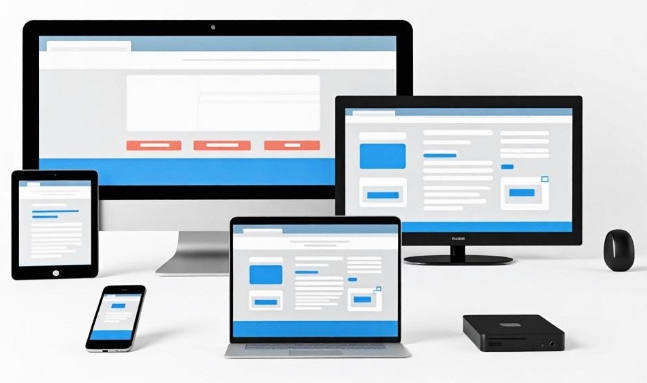Common Issues and Solutions in Mini-Program Development
- latest articles
- 1.DApp Development & Customization: Merging Diverse Market Needs with User Experience 2.Analysis of the Core Technical System in DApp Project Development 3.How to achieve cross-chain interoperability in Web3 projects? 4.How does the tokenization of points reconstruct the e-commerce ecosystem? 5.How to Set and Track Data Metrics for a Points Mall? 6.What is DApp Development? Core Concepts and Technical Analysis 7.Inventory of commonly used Web3 development tools and usage tips 8.Development of a Distribution System Integrated with Social E-commerce 9.Six Key Steps for Businesses to Build a Points Mall System 10.What is DApp Development? A Comprehensive Guide from Concept to Implementation
- Popular Articles
- 1.Future Trends and Technology Predictions for APP Development in 2025 2.Analysis of the DeFi Ecosystem: How Developers Can Participate in Decentralized Finance Innovation 3.From Zero to One: How PI Mall Revolutionizes the Traditional E-commerce Model 4.DAPP Development | Best Practices for Professional Customization and Rapid Launch 5.Recommended by the Web3 developer community: the most noteworthy forums and resources 6.From Cloud Computing to Computing Power Leasing: Building a Flexible and Scalable Computing Resource Platform 7.How to Develop a Successful Douyin Mini Program: Technical Architecture and Best Practices 8.Shared Bike System APP: The Convenient Choice in the Era of Smart Travel 9.How to Create a Successful Dating App: From Needs Analysis to User Experience Design 10.From Design to Development: The Complete Process of Bringing an APP Idea to Life
With the rapid development of internet technology, mini-programs have become a focal point for an increasing number of enterprises and developers. As lightweight applications based on platforms like WeChat, Alipay, and Baidu, they feature rapid development and no need for download and installation, quickly attracting a large number of developers and businesses into this field in a short time. However, various challenges and issues can arise during the development of mini-programs. This article will analyze common problems in mini-program development from multiple perspectives and propose corresponding solutions to help developers complete their tasks more efficiently.
1. Performance Issues: Slow Loading Speed
Fast loading is a key feature of mini-programs, but many developers find that their mini-programs load slower than expected, or even experience lag or loading failures. Slow loading not only affects the user experience but can also lead to user churn, putting significant pressure on developers.
Solutions:
Image Optimization: Images often account for a large portion of a mini-program's resources, so optimizing them is key to improving loading speed. This can be achieved by compressing images and using appropriate formats (such as WebP) to reduce their size. Additionally, leveraging lazy loading for images to load them on demand can further enhance page loading efficiency.
Code Splitting: If the code of a mini-program is too large, it can slow down page loading. By splitting the code into multiple modules and loading each module on demand, loading speed can be significantly improved. WeChat Mini-Program's code splitting technology allows developers to divide the code, so users only need to load the necessary parts, reducing the initial loading time.
Caching Mechanism: Proper use of caching can reduce the number of requests and improve response speed. For example, using local storage to cache user data or page content avoids requesting the server every time.
Optimize Network Requests: Reduce the number and size of network requests to alleviate the loading pressure on the mini-program. This can include compressing data and minimizing the amount of data returned by API requests.
2. Compatibility Issues: Differences Between Devices and Operating Systems
During mini-program development, developers may encounter compatibility issues between different devices and operating systems (such as iOS and Android). The same mini-program may perform inconsistently on different devices, leading to a poor user experience.
Solutions:
Proper Use of Platform APIs: Mini-program platforms provide a series of APIs to handle device adaptation issues. Developers can use these APIs to determine the current device's performance, resolution, and operating system, and make appropriate adjustments accordingly.
Adapt to Different Resolutions: When designing and developing, consider the varying resolutions of devices and use relative units (such as rpx) for layout to ensure consistent display across different devices. Also, ensure that images and other media files can adapt to screens of different resolutions.
Responsive Layout in UI Design: To accommodate screens of different sizes and resolutions, adopt responsive design principles to ensure the page displays well on various devices. Using techniques like media queries and flexible layouts, developers can ensure the mini-program's UI maintains a good appearance across different devices.
Multi-Platform Testing: After completing the mini-program, developers should conduct tests on multiple devices and operating systems to ensure stability and compatibility in various environments, avoiding bugs caused by compatibility issues.
3. Data Storage Issues
Mini-programs often need to store user data and operation records. Choosing the appropriate data storage method and ensuring data security and consistency are challenges many developers face.
Solutions:
Choose the Right Storage Method: Mini-programs offer several storage options, including local caching and cloud storage. For smaller amounts of data, local storage (such as WeChat Mini-Program's Storage API) can be used, which offers fast access and is suitable for storing user settings and preferences. For larger amounts of data that need long-term preservation, cloud storage services can be chosen, managed through cloud databases.
Data Encryption and Security: When storing sensitive information, data security must be considered. Encryption techniques can be used to store data securely, preventing leaks of sensitive information. Additionally, pay attention to access control to ensure only authorized users can access specific data.
Data Synchronization Issues: Mini-programs often need to synchronize data with servers, especially when users switch between devices. To avoid data synchronization problems, implement conflict resolution mechanisms during design, such as using timestamps or version numbers to determine data priority and update order.
Use Suitable Databases: If the data volume is large or complex queries are needed during mini-program development, choose an appropriate mini-program database. The database services provided by WeChat Cloud Development facilitate efficient data storage and querying, with high availability and scalability.
4. User Experience Issues: Poor Interaction Design
User experience is key to the success of a mini-program. If the interaction design does not align with user habits, it may lead to user churn. Therefore, good interaction design is crucial.
Solutions:
Simple Interface Design: The interface of a mini-program should be clear and straightforward, avoiding complex operation flows. Developers should consider user scenarios during design and provide interfaces that are easy to understand and operate.
Smooth Animations and Transitions: Using appropriate animations and transitions can enhance the interactivity of a mini-program and increase user engagement, but avoid overly complex animations that may cause performance issues.
Guidance Design: For new users, simple guidance design can help them familiarize themselves with the mini-program's functions more quickly. Developers can use guide pages and prompts to help users understand how to use the mini-program.
Appropriate Feedback Mechanisms: The mini-program should provide timely and clear user feedback, such as progress bars during loading and success messages after operations, to enhance user confidence.
5. Publishing and Update Issues
After completing the development of a mini-program, publishing and updating are other considerations. Developers may encounter issues such as long review times or failed version updates during this process.
Solutions:
Prepare Publishing Materials in Advance: Before submitting a mini-program for review, developers should carefully read the platform's publishing requirements and ensure all materials (such as screenshots and feature descriptions) meet the standards to avoid rejection due to incomplete or non-compliant materials.
Gradual Updates: Version updates for mini-programs should be rolled out gradually, avoiding too many changes at once. Start with small-scale updates to ensure the new version has no major issues before a full rollout.
Ensure Code Stability: During publishing and updating, developers should ensure code stability and conduct thorough testing to avoid functional abnormalities caused by the update.
Conclusion
Mini-program development is a complex and challenging task, and various issues are inevitable during the process. However, as long as developers fully understand the root causes of problems and adopt effective solutions, they can successfully overcome these challenges and enhance the performance and user experience of their mini-programs. We hope this article provides valuable insights and assistance to developers currently engaged in mini-program development.
-

How to Increase User Stickiness and Activity Through Mini Program Development
With the development of the internet and mobile internet, mini-programs, as an e···
-

How can mini-program development assist in corporate marketing and e-commerce transformation?
In today's rapidly evolving mobile internet landscape, corporate marketing and e···
-

Offline Functionality Design and Data Synchronization in Mini-Program Development
With the rapid development of mobile internet, mini-programs, as a lightweight a···

 Blockchain
Blockchain












